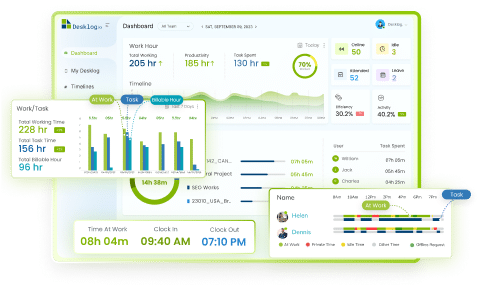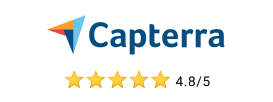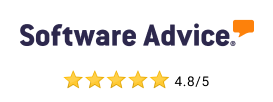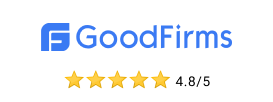
Back To Office: How To Make It More Productive With Time Tracking Software ?
As the world steadily redefines its work landscape, the norm of returning to office, once taken for granted, is now a nuanced process, encompassing a blend of safety, adaptability, and productivity. This return, however, isn’t just a mere physical relocation. It is an opportunity to recalibrate and amplify workplace productivity in the post-pandemic world.
According to a report from Resume Builder, a staggering 90% of companies are gearing up to implement return to office policies by the close of 2024, signifying a definitive shift back to traditional workspaces. The reintegration into office spaces demands an attentive approach – one that leverages technological solutions to enhance efficiency.
Enter time tracking software – a game changing productivity tool primed for the contemporary workplace. In this blog, we delve into the intricacies of navigating the return to office and how time tracking software serves as a pivotal asset in maximizing productivity within this transition.
The Role of Time Tracking Software in the Office
As companies navigate the return to office spaces, the role of technology in streamlining operations has never been more pronounced. Among the plethora of productivity enhancing tools, time tracking software stands out as a pivotal asset in optimizing workflow and fostering efficiency.
Time tracking software, at its core, is a digital tool designed to track and record the time spent during work hours. Its purpose is multifaceted, aiming to facilitate productivity, enhance accountability, and provide valuable insights into performance evaluation.
This software serves as a robust mechanism for organizations to streamline their operations. It offers a systematic approach to track and manage employee activities, ensuring a smooth transition from remote work back into the office setting.
Statistical Fact
The remote work wave is declining, with only a quarter of U.S. households currently having someone working remotely, a steep drop from the 2021.
Benefits of Time Tracking Software for Employees & Employers
| Benefits | For Employees | For Employers |
|---|---|---|
| Improved Time Management | Insight into the time allocated to each task and project enables employees to prioritize effectively, meet deadlines, and enhance their time management skills. | Enhanced visibility into how time is utilized across teams and projects, allowing for better resource allocation and workflow optimization. |
| Increased Accountability | Helps employees track and take ownership of their tasks, ensuring accountability for time spent on projects and tasks. | Promotes a culture of accountability within the workforce, leading to improved project tracking and adherence to deadlines. |
| Performance Evaluation | Provides a clear overview of individual productivity, enabling employees to showcase their contributions based on measurable data. | Enables employers to assess employee performance with tracked data, facilitating fair evaluations. |
| Enhanced Project Planning | Empowers employees to plan and organize tasks more effectively, leading to better project outcomes and meeting goals efficiently. | Facilitates better project planning and forecasting, enabling more accurate estimations and billing. |
| Increased Productivity | Allows employees to focus on high-impact tasks, reducing distractions and enhancing overall output. | Drives overall productivity improvements by streamlining workflows, identifying bottlenecks, and encouraging a more efficient allocation of resources and efforts. |
Features of Effective Time Tracking Tools
Automate Time Tracking
The automated time tracking feature meticulously tracks their work hours. It offers insights into productivity patterns, helping individuals identify peak efficiency periods and areas for improvement. With real-time insights, employees can self-regulate, minimize distractions, and maintain focus, ultimately enhancing productivity as they readjust to the office environment.
Project Time Tracking
In the back to office environment, juggling multiple projects becomes the norm. Project time tracking functionality allows employees to create, assign, and track projects and tasks precisely. This fosters a better understanding of project progress and aids in managing deadlines effectively. By having a clear overview of time spent on various projects, employees can prioritize tasks efficiently, contributing to improved productivity as they allocate their efforts based on project urgency and importance.
Activity Tracking
As employees transition back to the office, staying focused on tasks amidst potential distractions is crucial. Activity tracking features help monitor employee activities during work hours. This insight enables employees to self-assess and refine their workflow, ensuring that time spent aligns with productive tasks rather than non-work-related activities. For employers, this data offers visibility into productivity patterns, assisting in identifying areas for improvement and optimizing workflow for better output.
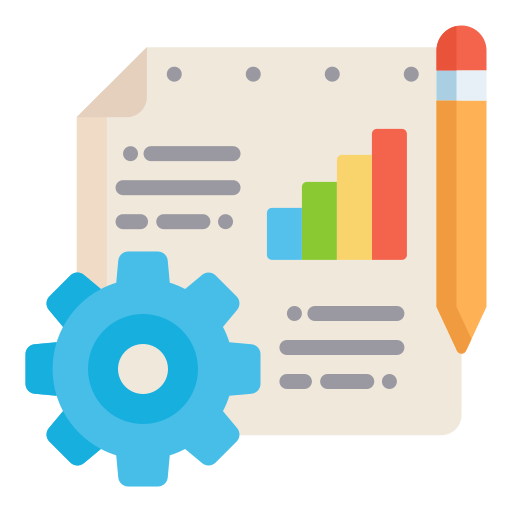
Project Invoicing & Billing
For employees engaging in client-based or project-based work, accurate invoicing is paramount. Time tracking software’s project invoicing and billing functionality streamline this process. By accurately documenting billable hours and tasks completed, employees can generate precise invoices. This not only ensures transparency with clients but also saves time by automating the invoicing process, allowing employees to focus more on core responsibilities, contributing to increased productivity.
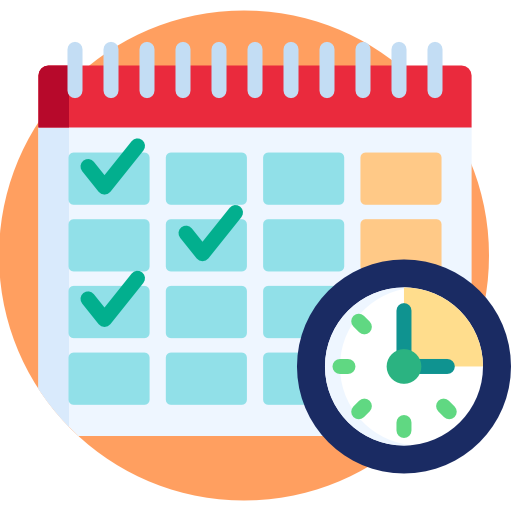
Automated Timesheet
In the hustle of returning to office routines, manually filling timesheets can be a cumbersome task. Automated timesheets simplify this process by compiling all tracked time data automatically. This reduces the time spent on administrative work and minimizes errors, allowing employees to invest their energy in productive tasks. Employers benefit from accurate timesheet data, enabling better resource allocation and performance evaluation.

App & URL Tracking
As employees readjust to in-office work, managing digital distractions becomes crucial. App and URL tracking features help in tracking the apps and websites accessed during work hours. This aids employees in self-regulating their digital activities, enhancing focus on work-related tasks. Employers gain insights into the digital behavior of their workforce, identifying potential productivity drains and fostering a more focused work environment for increased efficiency.

Did you know?
83% of companies already back in the office track employee attendance, while 70% planning to return to office in 2024 intend to implement attendance tracking.
Implementing Time Tracking Software in the Workplace
In the process of selecting time tracking software for your return to office strategy, it’s imperative to conduct a thorough assessment of your organization’s unique needs and goals. Moreover, considering the evolving dynamics of returning to office work, the chosen software should facilitate a smooth transition while addressing specific challenges encountered in this phase.
1. User-Friendliness
A user-friendly interface ensures seamless adoption by employees returning to office. Intuitive navigation and straightforward functionalities contribute to higher user acceptance and engagement. This aspect simplifies the tracking process, reducing resistance to its implementation.
2. Integration Capabilities
Integration capabilities play a pivotal role, particularly for organizations using other tools like project management software. Seamless integration, such as the integration with Jira, streamlines workflows and consolidates data, enabling a more holistic view of tasks and projects.
3. Customization Options
Configuration options, screenshot configuration for proof of work, work hours settings, and time tracking settings allow tailoring the software to align with unique workflows and preferences. This level of customization enhances usability and adaptability, ensuring the software meets specific requirements.
4. Data Security and Privacy
Maintaining data security and privacy is paramount, especially when tracking sensitive information such as employee work hours. It’s essential to choose software compliant with industry standards and regulations, such as GDPR, to safeguard confidential employee data.
5. Reporting and Analytics Capabilities
Look for software that offers detailed and customizable reports, providing insights into employee productivity, project progress, and time allocation. Advanced analytics features can help identify patterns, trends, and areas for improvement, aiding in optimizing workflows in the post-return to office environment.
Communicating the Implementation to Employees
The transition back to the office after a period of remote work can present challenges, but it also provides an opportunity for organizations to introduce innovative tools to enhance productivity and efficiency. Implementing time tracking software is one such step that can significantly benefit both employers and employees. However, effectively communicating this implementation to the workforce is key to its successful adoption.
1. Transparent Communication
Begin by transparently explaining the reasons behind the introduction of time tracking software. Emphasize the positive aspects, such as increased productivity, better task management, and accurate project tracking. Highlight that it is not about monitoring employees, but rather about optimizing workflows and facilitating a more organized work environment.
2. Benefits for Employees
Illustrate how the time tracking software can directly benefit employees in their day-to-day work. Emphasize that it provides a clear overview of tasks and deadlines, enabling better time management and reducing stress. Stress the point that accurate project tracking helps in fair compensation for their work completed.
3. Address Concerns
Acknowledge any potential concerns employees might have about the implementation of time tracking software. Address privacy concerns by explaining the data collected and how it will be used solely for work-related purposes. Emphasize that the focus is on improving productivity and not on micromanaging individual activities.
4. Encourage Feedback
Create an open channel for employees to provide feedback on their experience with the time tracking software. This not only demonstrates that their opinions are valued but also allows for potential improvements or adjustments based on their input.
In summary, when communicating the implementation of time tracking software upon returning to office, emphasize its advantages for employees. Highlight how the software supports better time management, task organization, and fair compensation for their efforts. By fostering open communication, providing adequate training, and addressing concerns, organizations can facilitate a smooth transition and promote the successful adoption of this productivity-enhancing tool.
Real-Life Success Stories
1) From Seed to Success: The Story of our Phoenix Project
iOSS is a Calicut based software development company, which has gone to remote culture during the pandemic. However, they soon called all the employees back to office when the pandemic had significantly subsided.
Actually, they decided to bring back their employees due to challenges in effectively managing their workforce within a remote setup. Hence, to manage and track their employees, they developed their own in-house product – Desklog time tracking software. With the employees returning to office and with the automation of Desklog, the company witnessed highly productive employees, resulting in a notably profitable business.
2) The story of Focuz Line Shipping
Focuz Line Shipping based in Saudi Arabia, implemented Desklog to their work culture a few years back. And they too observed a commendable rise in overall organizational efficiency.
They were really happy using Desklog to track and record their employees accurately. It helped them keep track of work hours, projects, and tasks, making it easy to bill clients only for the work completed. The employees also expressed their change in their working culture after the implementation of Desklog. They themselves had an idea of what they were doing and were able to work more productively. Further, they were happy and content to see their productivity soar.
Endnote
As employees return to office, using time tracking software becomes crucial for maximizing productivity. Desklog stands out as an exceptional tool in this regard, offering features that streamline task management and accurate time tracking.
As employees become accustomed to the office once again, the need for efficient time tracking becomes increasingly evident. Now more than ever, with the return to office dynamics, Desklog proves invaluable in establishing a structured work culture. Therefore, I strongly encourage organizations returning to office to consider implementing Desklog as a foundational tool.

